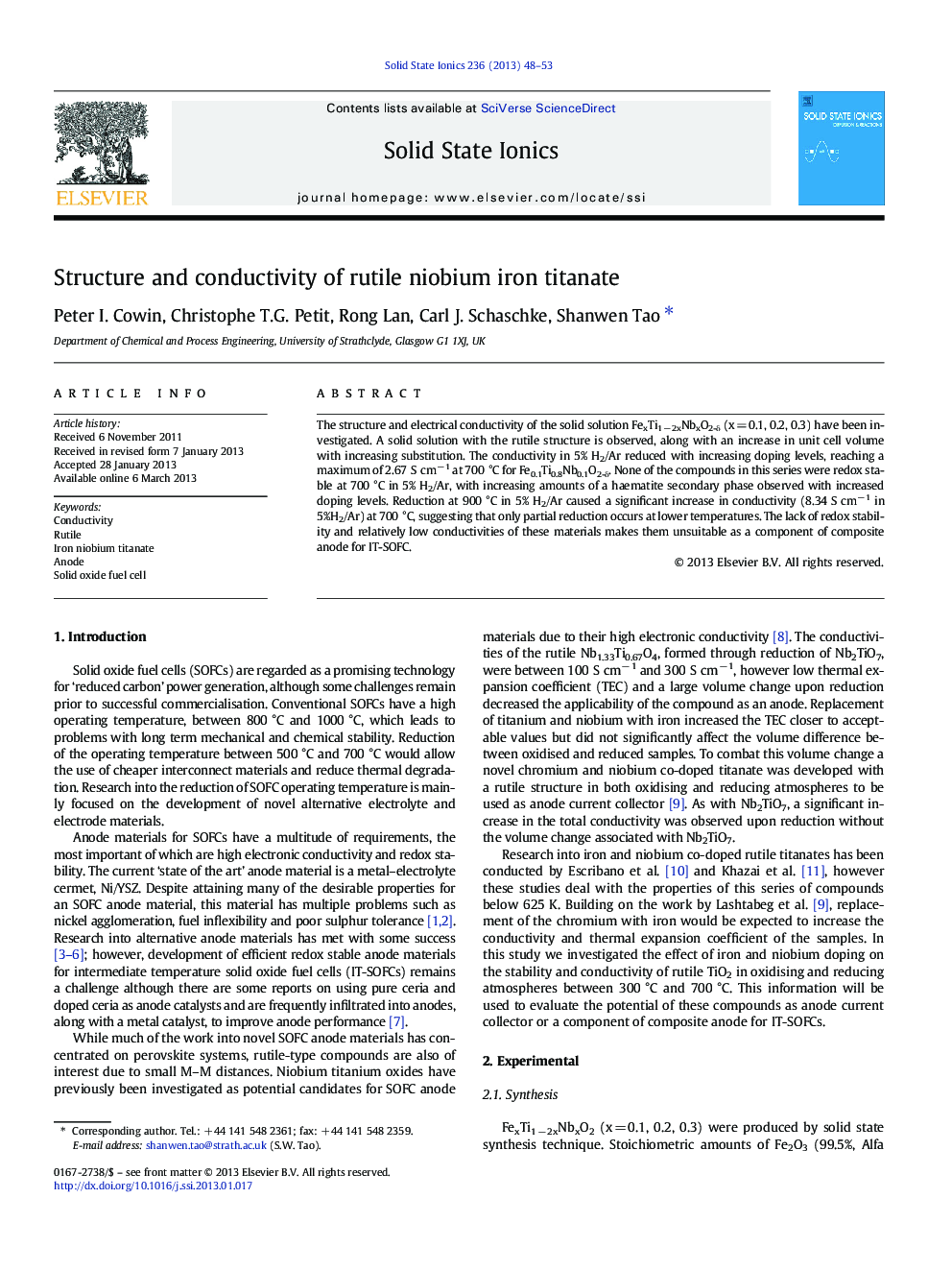| Article ID | Journal | Published Year | Pages | File Type |
|---|---|---|---|---|
| 1296721 | Solid State Ionics | 2013 | 6 Pages |
The structure and electrical conductivity of the solid solution FexTi1 − 2xNbxO2-δ (x = 0.1, 0.2, 0.3) have been investigated. A solid solution with the rutile structure is observed, along with an increase in unit cell volume with increasing substitution. The conductivity in 5% H2/Ar reduced with increasing doping levels, reaching a maximum of 2.67 S cm− 1 at 700 °C for Fe0.1Ti0.8Nb0.1O2-δ. None of the compounds in this series were redox stable at 700 °C in 5% H2/Ar, with increasing amounts of a haematite secondary phase observed with increased doping levels. Reduction at 900 °C in 5% H2/Ar caused a significant increase in conductivity (8.34 S cm− 1 in 5%H2/Ar) at 700 °C, suggesting that only partial reduction occurs at lower temperatures. The lack of redox stability and relatively low conductivities of these materials makes them unsuitable as a component of composite anode for IT-SOFC.
► A rutile solid solution FexTi1-2xNbxO2-δ (x<0.3) was synthesised. ► The conductivity of these compounds was noted to increase upon reduction. ► The compounds were not stable upon reduction with formation of a (Fe,Ti,Nb)2O3. ► Reduction at higher temperature causes significant increases in conductivity.
